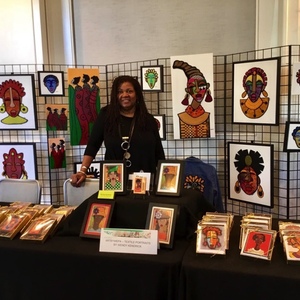Wendy Kendrick ’76, The Artist Who Made Others See: From Humiliation to a Phoenix (Jackelinne Claros Benitez '24, Fall '22)
On November 21, 1971, former President John G. Kemeny announced on Dartmouth College Radio that the Board of Trustees had agreed to allow women to matriculate for a four-year undergraduate education. Among the first co-ed cohort, there were merely thirty-eight African American women–this minute number demonstrates the double jeopardy these women — minoritized by both gender and race — had to face to become accepted. As Frances Beal coined the term, double jeopardy involves the intersecting oppression within racial and gender identities. The oppression from multiple identities inevitably results in social injustices, including taking on “degrading and dehumanizing jobs” (Beal 2008). Nonetheless, the new era of coeducation marked a pivotal point in Dartmouth’s history, resulting in institutional changes that accommodated Black students during that time, but the need for improvements in other areas remain.
Born in Kentucky and later raised in Ohio, Wendy Kendrick (‘76) was one of the thirty-eight African American women to join that first graduating co-ed class. While at Dartmouth, Kendrick contended with double jeopardy as well as difficulties with the art department and her major. Her time at Dartmouth was not favorable. Nonetheless, she has expressed a new mission for her life’s trajectory: becoming more present for current Black Dartmouth students to serve as the mentor she wishes she had during her undergraduate career.

